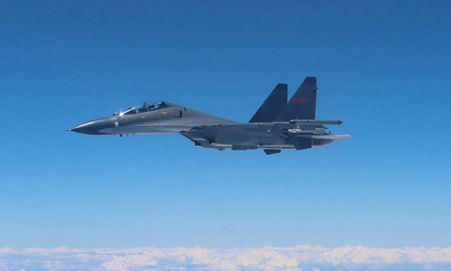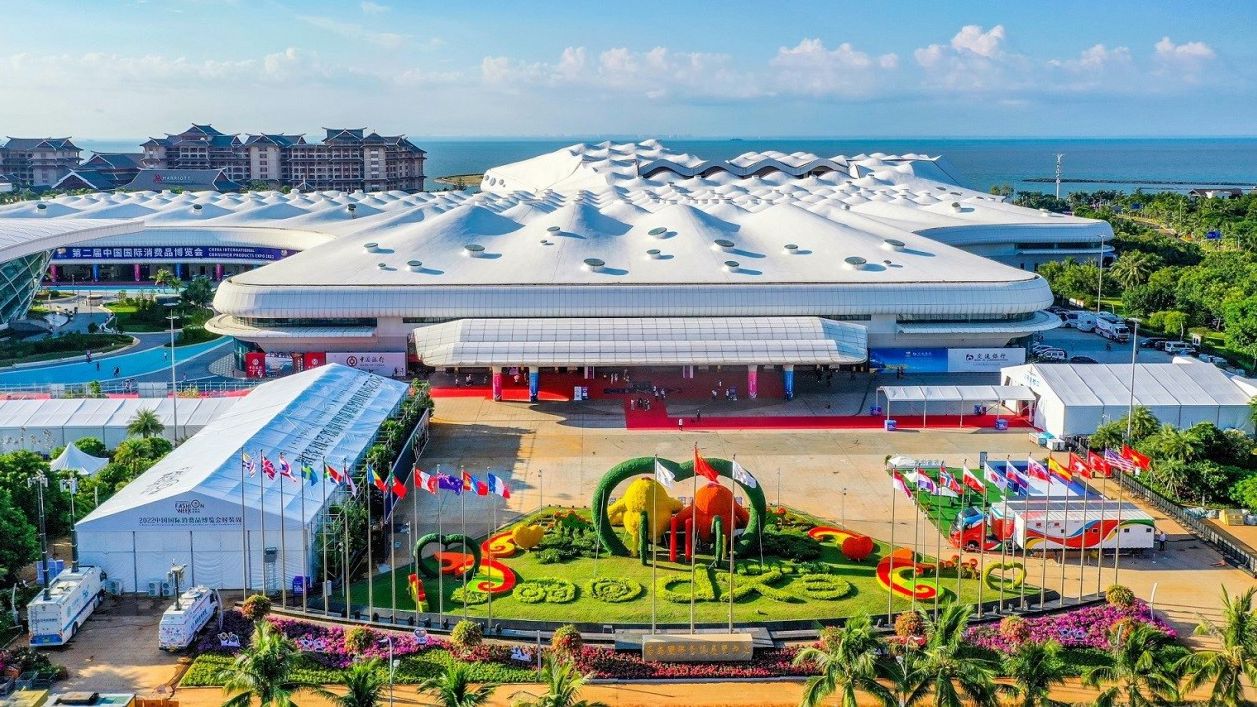Warning sounded over US interest rate rises
Fed hikes could bring more woes to Asian nations, analysts say
The latest interest rate rise in the United States could increase financial misery for vulnerable developing countries, including those in Asia, making it more difficult for them to meet debt repayments, according to analysts.
US rate hikes place the onus on central banks in other nations to follow suit, while increasing the risk of capital outflows, the analysts said, adding that rate rises also contribute to inflation and currency devaluation in many countries, leading to a foreign exchange shortage.
Such developments will add to the hardship for people in these developing economies, and may result in economic turmoil, political instability, or even trigger a humanitarian disaster, the experts said.
On July 27, the US Federal Reserve raised its benchmark interest rate by 75 basis points for the second consecutive month to combat domestic inflation, which is running at a 40-year high.
It was the fourth time that the US central bank had raised interest rates this year, and at a pace and magnitude unprecedented for nearly three decades. The combined hike of 2.25 percent has prompted market speculation that the rate will be raised further in autumn.
Krystal Tan, an economist at ANZ Bank in Melbourne, Australia, said: "Given the importance of the US dollar in the global financial system, Fed hikes will have an impact on the rest of the world, and the global trend of rate rises has inevitably increased the cost of borrowing.
"Some economies are more vulnerable than others, and this factor in turn depends on a range of metrics, including fiscal positions, external buffers, inflation pressures and leverage."
Tan said aggressive moves by the Fed will put pressure on Asian central banks to tighten monetary policy faster than they may like, while not keeping in step with such hikes will raise the risk of capital outflows and currency pressure (which also affect inflation).
For example, she cited the decision by the central bank in the Philippines to raise its off-cycle policy rate by 75 basis points last month and Bank of Korea making its first-ever 50 basis points hike the same month.
The weaker-performing major Asian currencies this year are the Japanese yen and the Thai baht, Tan said, adding, "The widening policy rate spreads with the US have played a role as both these Asian central banks have yet to raise such rates."
Experts said that with central banks worldwide following the US decision to raise rates, emerging markets have to some extent lost their appeal to overseas investors in recent months.
Siah Hwee Ang, professor of international business and strategy and chair in business in Asia at Victoria University of Wellington in New Zealand, said the US interest rate hikes were expected, so they did not come as a shock. But as the US is the largest economy and the dollar is the global trading currency, the rate rises will have an impact on other countries.
He said interest rate rises slow borrowing, reducing inflation in the US. "This means that if the US currency drops, then Asia Pacific economies will see a lot of money flowing out because people will probably start to invest in the US," the professor added.
He said that if a lot of money flows out of Asia Pacific economies, countries in the region will face challenges in coping with the situation, which will be less problematic for those with substantial US dollar reserves, such as China. However, countries that lack large holdings of the US currency will face problems if the dollar exchange rate suddenly alters.
Statistics show that, for five months in a row, investors have withdrawn funds from emerging markets, with these outflows totaling $38 billion last month-the largest such exodus since 2005.
According to the Institute of International Finance, cross-border outflows from emerging markets by investors in stocks and domestic bonds reached $10.5 billion last month alone.
Figures from JPMorgan show that this year international investors have withdrawn $30 billion from foreign currency bond funds in emerging markets, resulting in increased bond issuing costs for such economies.
Capital outflows played a role in Sri Lanka defaulting on its sovereign debts earlier this year. The island nation, which is experiencing its worst economic crisis for nearly 70 years, has one of the world's most fragile economies. The country faces challenges such as rising inflation and a lack of necessities, including fuel, food and medicine.
Malinda Meegoda, a research associate at the Lakshman Kadirgamar Institute of International Relations and Strategic Studies, the Sri Lankan Foreign Ministry's think tank, said the nation's economic turmoil is largely the result of its foreign currency reserves drying up.
Addressing other economies that face similar risks, Meegoda said, "The immediate concern is Pakistan, while some observers have also flagged up Nepal as showing signs of distress."
He said Pakistan, like Sri Lanka, has the same structural factors in its economy, adding, "Coupled with this, the war on terror in the region has prevented much-needed foreign direct investment flowing in."
Syed Shujaat Ahmed, an economist at the Sustainable Development Policy Institute, a think tank based in Islamabad, the Pakistani capital, said the nation's economy faces high inflation and currency depreciation, with overall purchasing power declining.
He added that as the value of the US dollar rises against the Pakistani rupee, spending is increasing, but income is not doing so at the required pace.
Pakistan's consumer price index, a main gauge of inflation, rose by nearly 25 percent year-on-year last month, when it stood at 8.4 percent, according to figures issued by the Pakistan Bureau of Statistics on Monday.
The Pakistani rupee also sank to a historic low against the US dollar last month, and since the start of this year it has lost more than 30 percent of its value against that currency, according to the Forex Association of Pakistan.
Miftah Ismail, Pakistan's finance minister, listed a number of factors, including interest rate hikes, that led to the rupee's depreciation.
However, this month the Pakistani currency appreciated as a result of the nation's improved imports bill, along with the expected release of a $1.2 billion loan tranche from the International Monetary Fund, or IMF.
Meanwhile, Bangladesh's foreign exchange reserves last month fell to below $40 billion for the first time in two years, due largely to higher import bills and a weak local currency, the taka.
Local media reports said Bangladesh has sent a formal request to the IMF for a loan to help the country combat ongoing financial volatility.
Htwe Htwe Thein, an associate professor in international business at the Faculty of Business and Law at Curtin University in Australia, said that following the recent interest rate hike in the US, the dollar is appreciating against most currencies in the Asia Pacific region.
Countries could experience difficulties with financing debt repayments, she said, adding, "In view of the increased level of loans taken up by governments during the pandemic to finance stimulus packages, it is a real worry that they could have trouble repaying these loans."
Moreover, the US interest rate hike will also result in imports becoming more expensive, and some countries could find it difficult to pay for goods from overseas, especially essential items such as medicines and fuel, the professor said.
This situation would compound the problem, with the shortage of imports already exacerbated by disruptions to supply chains due to the COVID-19 pandemic and the Russia-Ukraine conflict, she said.
Turning to Myanmar, the professor said the US rate hike wouldn't help the Southeast Asian nation, where a military coup took place 18 months ago.
Ahmed, from the Sustainable Development Policy Institute in Islamabad, said that US interest rate hikes make it harder for countries to raise funds in the international market amid a liquidity crisis.
"Shocks" have been experienced with global inflation following the US rate rises, as the dollar is considered a key currency for international trade, Ahmed said.
In Laos, for example, the inflation rate reached 23.6 percent year-on-year in June, the highest level recorded since May 2000, with energy and consumer goods prices surging.
Last month, the Vientiane Times quoted the Lao Statistics Bureau as saying that soaring prices for fuel, gas and other imports, together with depreciation of the Laotian currency, the kip, are among the main factors driving inflation.
Nepal, meanwhile, is aiming for 8 percent economic growth for the 2022-23 fiscal year. The country faces an inflation rate running at a six-year high, putting its central bank in a dilemma over whether to focus on price control or economic growth.
The inflation rate in Nepal stood at 8.56 percent in June, a 70-month high, according to the country's central bank.
However, most Southeast Asian economies, including Indonesia and Malaysia, have learned a lesson from the 1997 financial crisis caused by steep and sudden US interest rate hikes, which left their finances poorly placed for years.
Ang, the economist in New Zealand, said that while there have been huge outflows of capital, other investors, such as those from China and Europe, may look to Asia Pacific, as investing in emerging markets still has huge potential for growth.
If this happens, these investors will replace those who have pulled out, so the overall effect of the US hikes may not be that damaging, Ang added.
Photos
Related Stories
- U.S. "viral underclass" suffer more from COVID-19: NBC
- Four in critical condition after lightning strike near White House
- U.S. stuck in "horrible plateau" of COVID-19 deaths: report
- Police find no victims after reports of shooting at mall in U.S. Minnesota
- U.S. trade deficit in June narrows for third straight month amid cooling demand
Copyright © 2022 People's Daily Online. All Rights Reserved.









